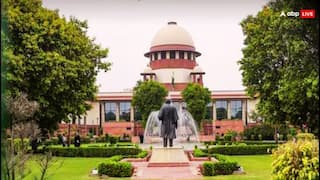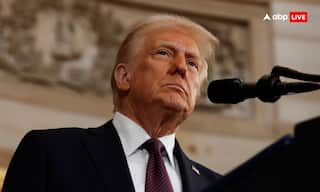Know How US Fed Reserve Rate Hike, Recession Concerns Will Impact India
The fourth rate hike this year by the US Fed could narrow the interest rate differential between the two nations thereby triggering more outflow of dollars from India’s debt and equity markets

The US Federal Reserve, in its straight second rise in the benchmark interest rate, increased rate by three-quarters of a percentage point on Wednesday in an agressive move to tame inflationary pressures. This is the fourth rate hike this year amid the effort of policymakers to tackle the strongest surge in inflation in more than four decades, reported by news agency Reuters.
Even as the Fed noted slowing down of the US economy, it hinted at plans to continue to increase borrowing costs. There are also growing fears as economists that the US may be slipping into recession. US President Joe Biden insisted the US economy will avoid a recession and supported the Fed in its battle to quell inflation even as his approval ratings have nosedived.
Biden is already feeling the heat over surging prices, which he has mostly blamed on the Russian invasion of Ukraine that has sent global food and energy prices rising.
US Fed Chair Jerome Powell and others have made it clear they are willing to risk a downturn and will keep raising interest rates until they see solid evidence that inflation is moving back towards the two per cent goal, Reuters reported.
US recession woes
While the Federal Open Market Committee made clear that it is "strongly committed to returning inflation to its two per cent objective" and geared up for more action if that goal is threatened.
Going by the common definition of recession, the GDP of a country needs to contract in two successive quarters. It is because declining GDP results in job losses, reduced incomes, and reduced consumption.
The US GDP in the first quarter shrinked 1.6 per cent, and the first reading on the April-June period is due out Thursday.
Since the US growth already contracted by 1.6 per cent during the first quarter (January, February and March) of 2022, a contraction in the second quarter will give a clear picture about the US recession.
In the US, the National Bureau of Economic Research (NBER), and specifically the NBER’s Business Cycle Dating Committee which declares a recession. But the NBER criteria for recession is a bit different.
The NBER's traditional definition of a recession is that “it is a significant decline in economic activity that is spread across the economy and that lasts more than a few months”, according to the Indian Express report.
How does it concern India?
In ist July update of the World Economic Outlook, the IMF has downgraded the growth projections for the US, China and India. “Downgrades for China and the United States, as well as for India, are driving the downward revisions to global growth during 2022–23, which reflect the materialisation of downside risks highlighted in the April 2022 World Economic Outlook,” it noted.
The fourth rate hike this year by the US Fed could narrow the interest rate differential between the two nations thereby triggering more outflow of dollars from India’s debt and equity markets. The narrowing interest rate differential will put pressure on the rupee which has been on a downward spiral against the dollar hitting a record low.
A weakening rupee will widen India’s trade deficit -- the difference between total exports and imports. It would mean costlier imports. Foreign investors have already pulled out more than $30 billion from Indian bond and equity markets so far in 2022, reported PTI. This may not augur well if risk aversion sets in and foreign investors become further bearish on India







































